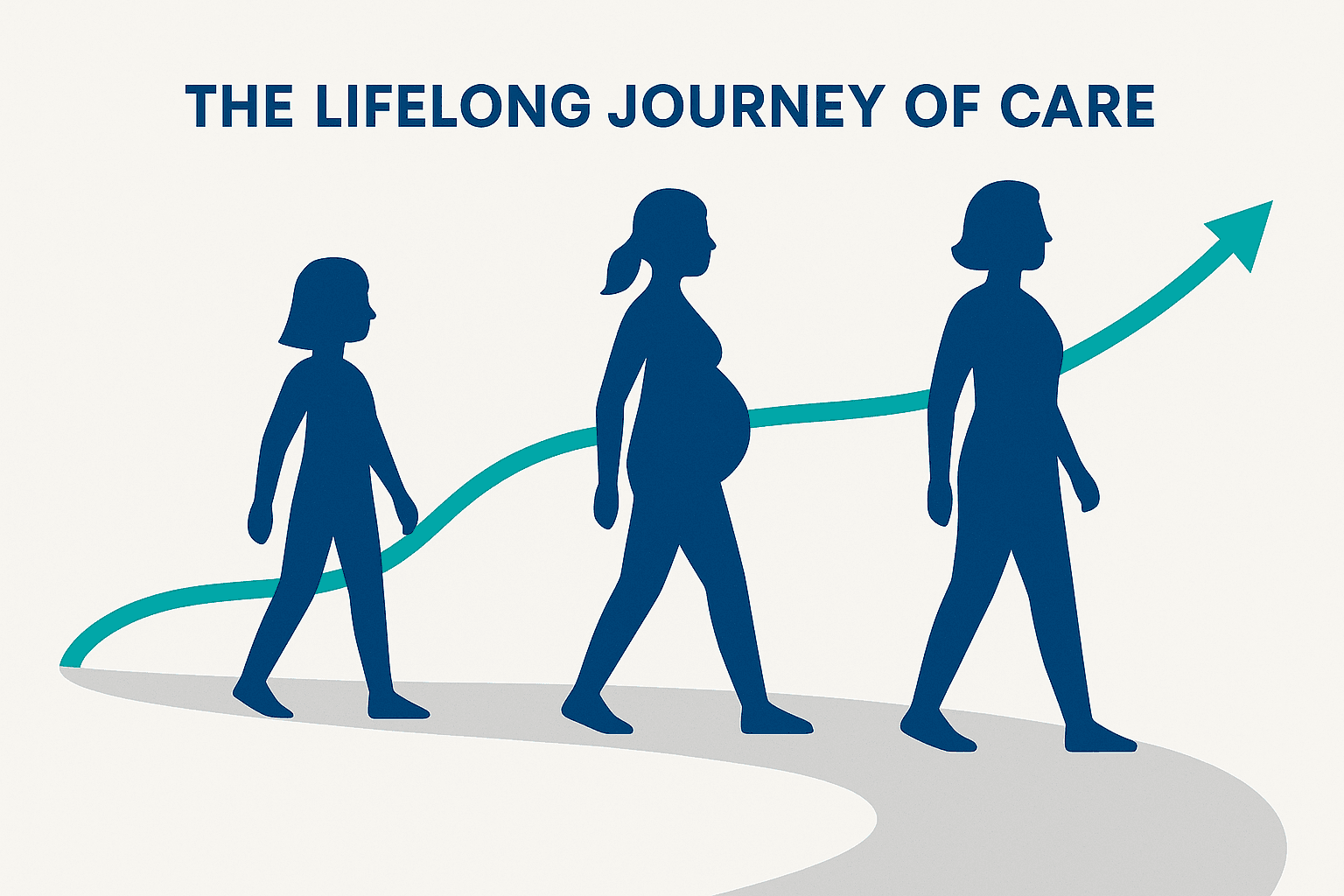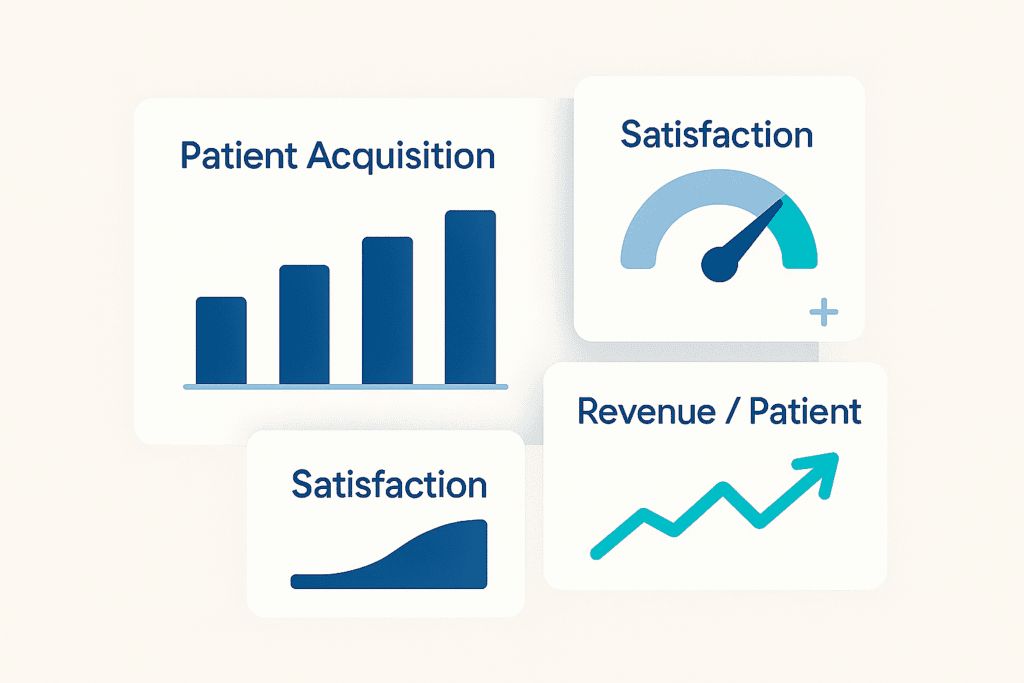
As a practice owner, you’re facing mounting pressure from declining reimbursements and rising operational costs. But here’s what successful practice owners know: the OB/GYN service line represents one of the most profitable expansion opportunities in healthcare today. Unlike episodic care specialties, women’s health creates patient relationships spanning decades—from adolescent care through pregnancy, family planning, and menopause management.
Practices that successfully expand into OB/GYN services see 40-60% higher patient lifetime value compared to general practice. Women’s health generates natural touchpoints across multiple life stages, creating consistent revenue streams that weather economic downturns better than other specialties.
This guide shows you exactly how to capitalize on this opportunity, from initial market assessment through measuring your expansion’s ROI.
What Makes OB/GYN Expansion Different From Other Service Lines?
OB/GYN expansion offers unique advantages that other specialties simply can’t match. First, you’re building relationships that last 20-30 years, not just treating isolated episodes. A patient who starts with you for prenatal care often continues for annual exams, family planning, and eventually menopause management.
Second, the referral patterns work in your favor. Women frequently recommend their OB/GYN providers to friends and family members—creating organic growth that reduces your marketing costs. Third, many OB/GYN services command premium pricing, especially when you offer comprehensive care packages or cash-based wellness services.
The key is understanding your local market dynamics. Analyze your current patient demographics against local population data. You’ll likely discover underserved segments that represent immediate revenue opportunities. For example, if your area has a growing population of women aged 25-35 but limited prenatal services, that’s your entry point.
When evaluating the financial implications of service line expansion, consider consulting with specialized financial planners who understand healthcare growth strategies and can help model your expansion’s ROI potential.
Practice Owner Reality Check: 73% of women choose their OB/GYN based on personal recommendations, making patient satisfaction your most powerful marketing tool.
How Do You Build a Patient Acquisition Engine That Actually Works?
Your digital presence determines whether potential patients choose your practice or your competitors. Here’s what actually moves the needle: 83% of patients visit your website before scheduling an appointment, making your online presence more critical than traditional advertising.
Start with your website. It must load fast on mobile devices and clearly communicate your services. But don’t stop there. Create content that addresses real patient concerns—prenatal nutrition guides, fertility FAQ pages, and menopause management resources. This positions you as the expert while improving your search rankings.
Social media amplifies your expertise and builds trust before patients ever walk through your door. One family clinic achieved a 46% increase in appointment requests within three months by sharing patient success stories and educational content on Facebook and Instagram.
| Digital Strategy | Expected ROI Timeline | Investment Level |
| Mobile-optimized website | 2-4 weeks | Low |
| Educational content creation | 8-12 weeks | Medium |
| Social media campaigns | 4-8 weeks | Low-Medium |
| Patient portal implementation | 6-12 weeks | Medium-High |
The secret is consistency. Post valuable content regularly, respond to patient inquiries promptly, and showcase your team’s expertise. This builds the trust that converts website visitors into scheduled appointments.
For practices considering more comprehensive digital transformation, our guide on patient engagement platform ROI analysis provides detailed insights into technology investments that drive patient acquisition.
What Type of Team Do You Need to Make This Profitable?

Your team selection directly impacts both patient satisfaction and your bottom line. OB/GYN services require staff who understand the sensitive nature of women’s health and can provide compassionate care across various life stages.
Budget 15-20% more for OB/GYN staffing compared to general practice. You need specialized training and longer patient interaction times. But this investment pays off through higher patient retention and satisfaction scores.
Focus on hiring for empathy and communication skills first, then train for technical competencies. Patients remember how your staff made them feel during vulnerable moments—pregnancy scares, fertility struggles, or menopause symptoms. These emotional connections drive long-term loyalty and referrals.
Hiring Tip: Ask candidates to describe how they’d handle a patient experiencing pregnancy loss. Their response reveals their emotional intelligence and communication style—critical factors for OB/GYN success.
Employee engagement becomes crucial once you’ve built your team. Satisfied staff provide better patient care and stay longer, reducing turnover costs. In OB/GYN services, where patients develop multi-year relationships with care teams, staff stability directly impacts patient retention. As you scale your team, consider implementing the operational frameworks outlined in our healthcare practice management guide to ensure sustainable growth.
How Do You Design Services That Patients Actually Want?
Patient-centered service design drives organic growth in women’s health practices. When patients feel genuinely cared for throughout their treatment journey, they become advocates who refer friends and family members.
Start by mapping the complete patient journey. A prenatal patient needs more than just medical care—she wants education about nutrition, exercise, and what to expect during delivery. A menopause patient seeks symptom management plus guidance on long-term health planning. Design your services around these comprehensive needs, not just clinical requirements.
Technology integration supports patient-centered care while improving your operational efficiency. Patient portals allow women to access test results, schedule appointments, and communicate with care teams between visits. This accessibility improves satisfaction scores while reducing administrative burden on your staff.
Consider offering cash-based wellness services alongside insurance-covered care. Nutrition counseling, fitness programs, and stress management workshops command premium pricing while creating additional touchpoints with patients. These services also differentiate your practice from competitors who only offer basic medical care.
For practices exploring comprehensive technology solutions, our analysis of virtual care integration best practices demonstrates how digital health tools can enhance patient experience while improving operational efficiency.
Revenue Opportunity: Practices offering comprehensive women’s wellness services see 25-35% higher revenue per patient compared to those providing only traditional medical care.
What Metrics Actually Matter for Your ROI?

Track the right metrics to ensure your expansion delivers profitable growth. Start with patient acquisition and retention rates—these reveal whether your marketing efforts are working and if patients are satisfied with your care.
Financial indicators deserve equal attention. Monitor revenue per patient, cost per acquisition, and overall service line profitability. These metrics show which services generate the highest returns and where operational improvements could increase margins.
| Key Performance Indicator | Target Range | Why It Matters |
| Patient acquisition rate | 15-25% monthly growth | Measures market penetration |
| Patient retention rate | 85-95% | Indicates service quality |
| Revenue per patient (annual) | $2,500-4,000 | Shows service line profitability |
| Patient satisfaction score | 4.5+ (5-point scale) | Predicts referral generation |
| Appointment fill rate | 90%+ | Reveals operational efficiency |
Don’t ignore operational metrics like appointment scheduling efficiency and no-show rates. These reveal bottlenecks that limit growth and impact patient experience. A 90%+ appointment fill rate indicates strong demand and efficient operations.
Success Benchmark: Practices that establish comprehensive KPI tracking before expansion are 40% more likely to achieve their growth targets within 18 months.
Regular performance monitoring creates actionable insights for your clinical teams while uncovering opportunities for sustainable revenue growth. By establishing baseline metrics before expansion and tracking progress consistently, you can demonstrate investment value to stakeholders and make informed decisions about future growth initiatives.
Ready to Maximize Your Practice’s Growth Potential?
The most successful practice owners use data to continuously refine their services, ensuring their OB/GYN expansion delivers both improved patient care and enhanced practice profitability. This systematic approach positions your practice for premium valuation when you eventually decide to sell, as detailed in our comprehensive guide on how to value a medical practice.
For practices ready to explore strategic partnerships or exit opportunities, our healthcare M&A advisory services provide the expertise needed to maximize transaction value while preserving your clinical legacy.



